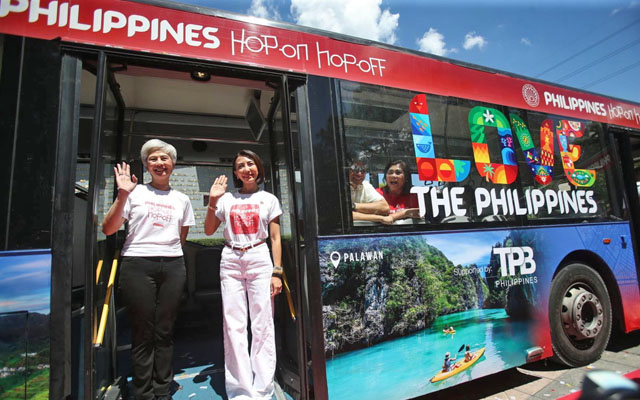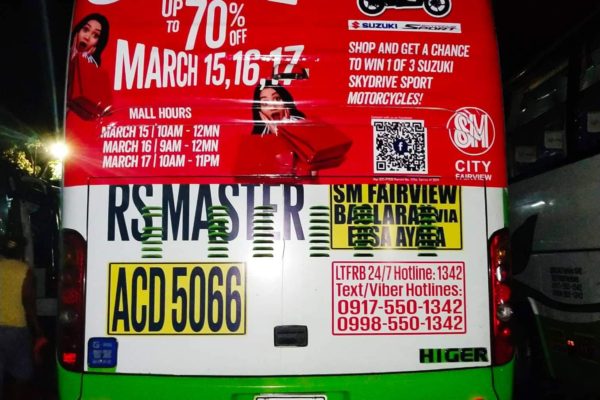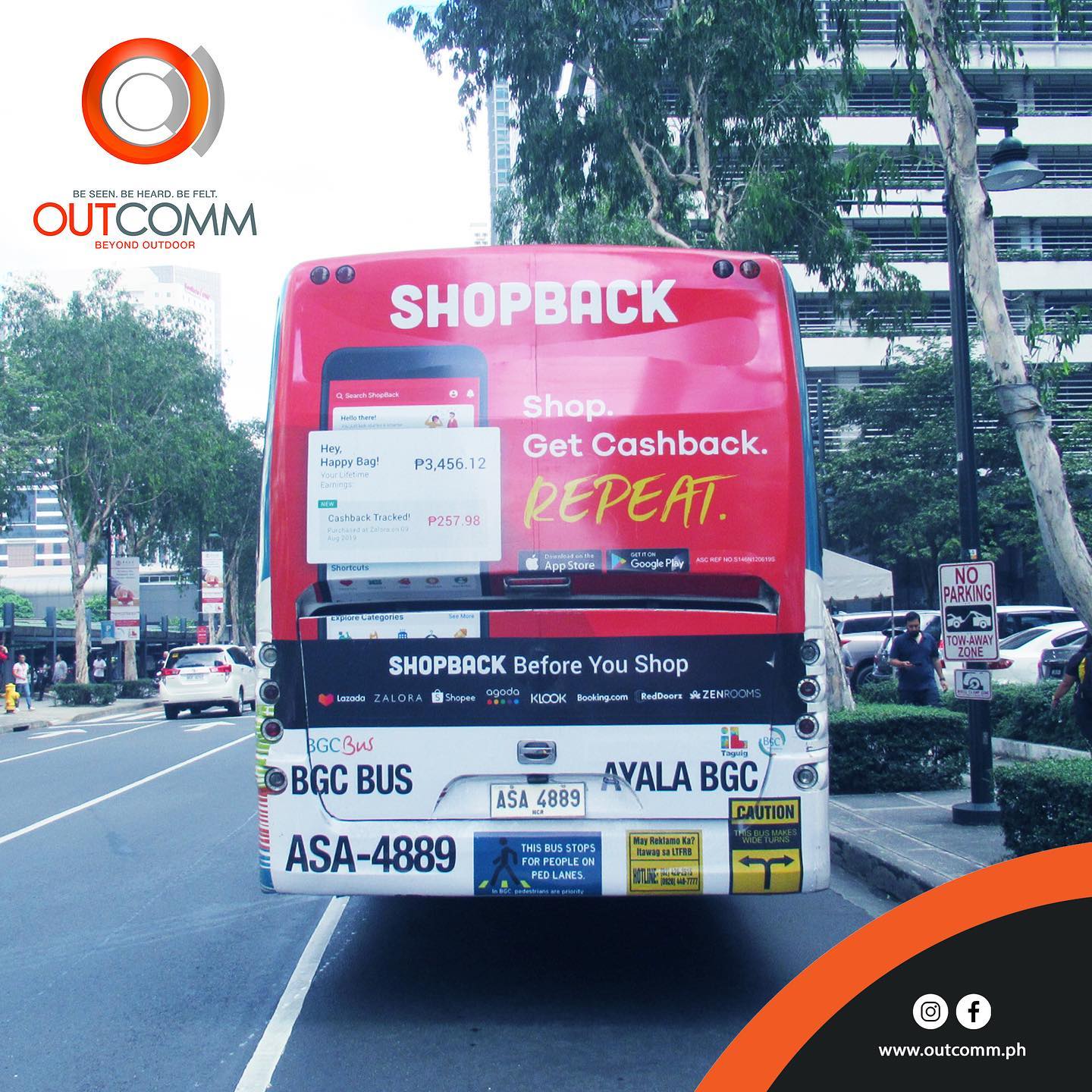Transit Advertising Philippines: Reach Countless Travelers Daily
Transit Advertising Philippines: Reach Countless Travelers Daily
Blog Article
Exactly How Transportation Advertising And Marketing Can Transform Public Transport Spaces Into Dynamic Advertising And Marketing Operatings Systems
Transportation advertising holds significant possibility to redefine public transport areas right into lively advertising systems that notify and engage. As we check out the multifaceted advantages and evolving techniques of transportation advertising, it increases the question of exactly how this improvement can redefine our interactions with both brand names and the city environment.
Benefits of Transit Marketing

Furthermore, transportation advertising is highly cost-effective contrasted to typical media. It allows advertisers to attain high perceptions at reduced costs, taking full advantage of return on investment. The restricted audience of commuters gives an opportunity for brands to communicate their messages to individuals who are often receptive throughout their traveling times.
Additionally, the vibrant nature of transit advertising and marketing enables campaigns to be updated often, making sure that messaging continues to be timely and pertinent. This versatility can be crucial in replying to market trends or promotional events, maintaining the brand name top-of-mind for customers. Finally, the prevalent visibility of transit advertising adds to brand recall; duplicated direct exposure within familiar travel contexts reinforces brand understanding and promotes consumer commitment, ultimately driving sales and improving brand reputation.
Kinds Of Transit Advertising And Marketing
Public transportation systems give various styles for advertising, each accommodating various advertising methods and audience engagement methods. One popular kind is exterior bus and train covers, which cover the whole car and develop a mobile signboard effect, enabling high exposure in metropolitan settings. These wraps can catch interest as they traverse busy streets, getting to a varied audience.
Another prominent layout is indoor advertising, which includes posters, electronic displays, and ads on transportation seats. These positionings engage guests during their journey, strengthening brand messaging in a confined room. Digital shows, in certain, use the advantage of dynamic content, making it possible for advertisers to update messages in real-time.
Terminal advertising and marketing is additionally significant, featuring posters, banners, and interactive booths within transit stations. These advertisements utilize foot web traffic and can target certain demographics based on area.
Lastly, marketing collaborations with transportation authorities can lead to one-of-a-kind campaigns, such as themed transit experiences or occasions, improving the general engagement with commuters. Each sort of transportation marketing provides distinct benefits, allowing brands to customize their technique to successfully reach their target market within the public transportation environment.
Engaging Commuters Efficiently
Commuters are increasingly flooded with advertising and marketing messages throughout their day-to-day trips, making it crucial for brand names to involve them in ingenious ways. To capture focus in this crowded room, marketers need to focus on creativity and importance. Using eye-catching visuals and concise messaging can significantly boost the likelihood of involvement.
Interactive elements, such as QR codes or increased reality attributes, can additionally transform static advertisements right into immersive image source experiences, fostering a much deeper connection with the target market. Brands should concentrate on addressing travelers' rate of interests and demands, customizing messages to resonate with their way of life, whether through promos for regional companies or solutions designed to boost their commuting experience.
In addition, timing plays a vital function; tactically positioning advertisements during height commuting hours can maximize exposure and effect. Engaging travelers properly likewise entails leveraging social media sites integration, permitting travelers to share their experiences or promotions directly from transit systems, thus enhancing brand name reach.
In essence, efficient engagement pivots on comprehending the traveler journey and producing compelling, interactive, and relevant advertising experiences that not only catch focus but likewise drive action and commitment. By doing so, brands can transform public transportation into a dynamic marketing platform that reverberates with its audience.

Measuring Marketing Impact
How can brands accurately evaluate the performance of their advertising and marketing campaigns in transportation environments? Measuring the influence of transportation advertising and marketing needs a diverse method that incorporates measurable and qualitative metrics. One prevalent method is tracking involvement with mobile analytics, where brands can evaluate foot traffic patterns and application interactions before, throughout, and after campaigns.
Studies can offer valuable insights right into brand recall and customer sentiment, permitting brand names to evaluate exactly how well their messages resonate with travelers. Additionally, checking social media sites engagement pertaining to certain campaigns can expose changes in public perception and brand name conversation.

Additionally, working together with transportation companies can enhance measurement precision, as they usually possess detailed demographic information on ridership patterns. By integrating these approaches, brands can create a comprehensive understanding of their advertising effectiveness, ensuring that their projects not only reach however also impact their target market successfully.
Future Patterns in Transit Marketing
A considerable change is prepared for en route advertising and marketing as technological developments and changing consumer habits improve the landscape. Transit Advertising Philippines. The assimilation of interactive media and electronic displays is anticipated to improve involvement, permitting brands to provide vibrant material that reverberates with diverse target markets. As public transportation systems embrace clever modern technology, marketers will utilize real-time information analytics to tailor messages based on passenger demographics and actions
Moreover, increased fact (AR) is positioned to change the means travelers interact with ads. By providing immersive experiences, AR can change an ordinary trip right into an interesting narrative that records attention and promotes brand name commitment. This advancement will likely encourage advertisers to develop even more experiential campaigns that drive consumer interaction.
Sustainability is one more important trend affecting transportation advertising and marketing. As ecological consciousness expands, brand names will progressively seek to straighten with environmentally friendly techniques, using lasting materials and advertising green initiatives within their projects.
Conclusion
In verdict, transit advertising offers significant benefits by boosting brand exposure and engaging a restricted target market. Through numerous formats, such as exterior wraps and electronic screens, it transforms public transport into a dynamic advertising platform. Efficient involvement methods and durable measurement methods additionally enhance its effect. As fads evolve, the potential for ingenious communications in between commuters More hints and brands is positioned to expand, making certain that transportation advertising and marketing continues to be an essential part of contemporary advertising and marketing techniques.
Transit advertising holds significant capacity to redefine public transportation rooms right into lively advertising systems that educate and involve. The prevalent presence of transit advertising adds to brand name recall; repeated exposure within acquainted travel contexts reinforces brand recognition and cultivates consumer loyalty, ultimately driving sales and improving brand track record.
Just how can brand names precisely evaluate the effectiveness of their marketing campaigns in transportation environments?In final thought, transportation advertising and marketing uses significant advantages by enhancing brand exposure and engaging a restricted target market. Transit Advertising Philippines. As patterns advance, the possibility for innovative interactions in between brand names and commuters is positioned to expand, ensuring that transportation marketing stays a crucial element of modern advertising and marketing techniques
Report this page